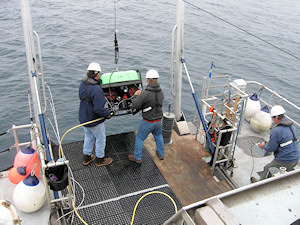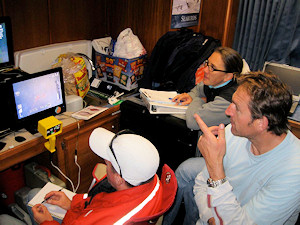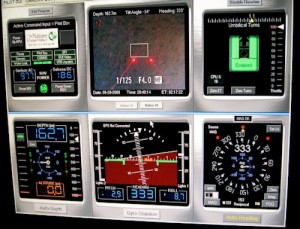
Scientists from The Nature Conservancy (TNC), California State University Monterey Bay (CSUMB) and the Sanctuary, along with engineers from Marine Applied Research and Exploration (MARE), and central coast fishermen recently completed the first in a series of research cruises. Funded in part by the California Ocean Protection Council, these annual cruises will collect information over the next five years to assess trawl impacts to soft seafloor habitats and their recovery trajectories in the waters off Morro Bay, California. Improving our understanding of how trawling activity affects marine flora, fauna, and habitats informs best management practices for groundfish trawling and promotes development of a more ecologically and economically sustainable fishery.
Concerns regarding the impacts and sustainability of trawling prompted TNC in 2005 to develop a collaborative approach with local fishermen and regulatory agencies aimed at reducing the impact of bottom trawling and improving the environmental and economic performance of the fishery. To reduce trawl effort and achieve seafloor habitat protection, TNC purchased the commercial trawl permits of Morro Bay fishermen interested in leaving the trawl fishery in exchange for agreement by the fishermen to work with TNC to design and recommend essential fish habitat closure areas.

A controlled study on the impacts of trawling is facilitated by the use of TNC-owned trawl permits and vessels. The first cruise, completed on the 30th of September, 2009, involved two vessels: the sanctuary research vessel, R/V Fulmar and a contracted trawl fishing boat, F/V Rita G. Scientists working off the Fulmar conducted video transects using a remotely operated vehicle (ROV) to document species assemblages and record images of the seafloor habitat. Scientists working off the Rita G collected sediment samples and benthic macro-invertebrates. Data collected during this cruise create a baseline for future comparisons along the same transect. The next cruise involves actually trawling the treatment sites. There are a total of four treatment sites and four control sites, alternating along a ~11 km transect that is located near the shelf-slope break. These cruises will be repeated every year for the next five years.

The goal of this study is to provide fishery managers with vital scientific information regarding the impacts of trawl fishing and the rate of recovery within trawled areas. The collaboration of local fishing communities and scientists for a cooperative research project is unprecedented along the central California coast. The results from this study will guide managers towards a more ecologically sustainable and profitable fishing industry in the Central Coast.
Links to more information:
- Monterey Bay National Marine Sanctuary
http://www.montereybay.noaa.gov - National Marine Fisheries Service
http://www.nmfs.gov
http://swfsc.noaa.gov/fed.aspx - Marine Applied Research and Exploration
http://www.maregroup.org - The Nature Conservancy
http://www.nature.org
http://www.nature.org/rov
http://www.nature.org/wherewework/northamerica/states/california/initiatives/ccgp.html - California State University Monterey Bay
http://www.csumb.edu
http://sep.csumb.edu/iame/Ifame_news/ifame_news.html - California Ocean Protection Council
http://www.opc.ca.gov